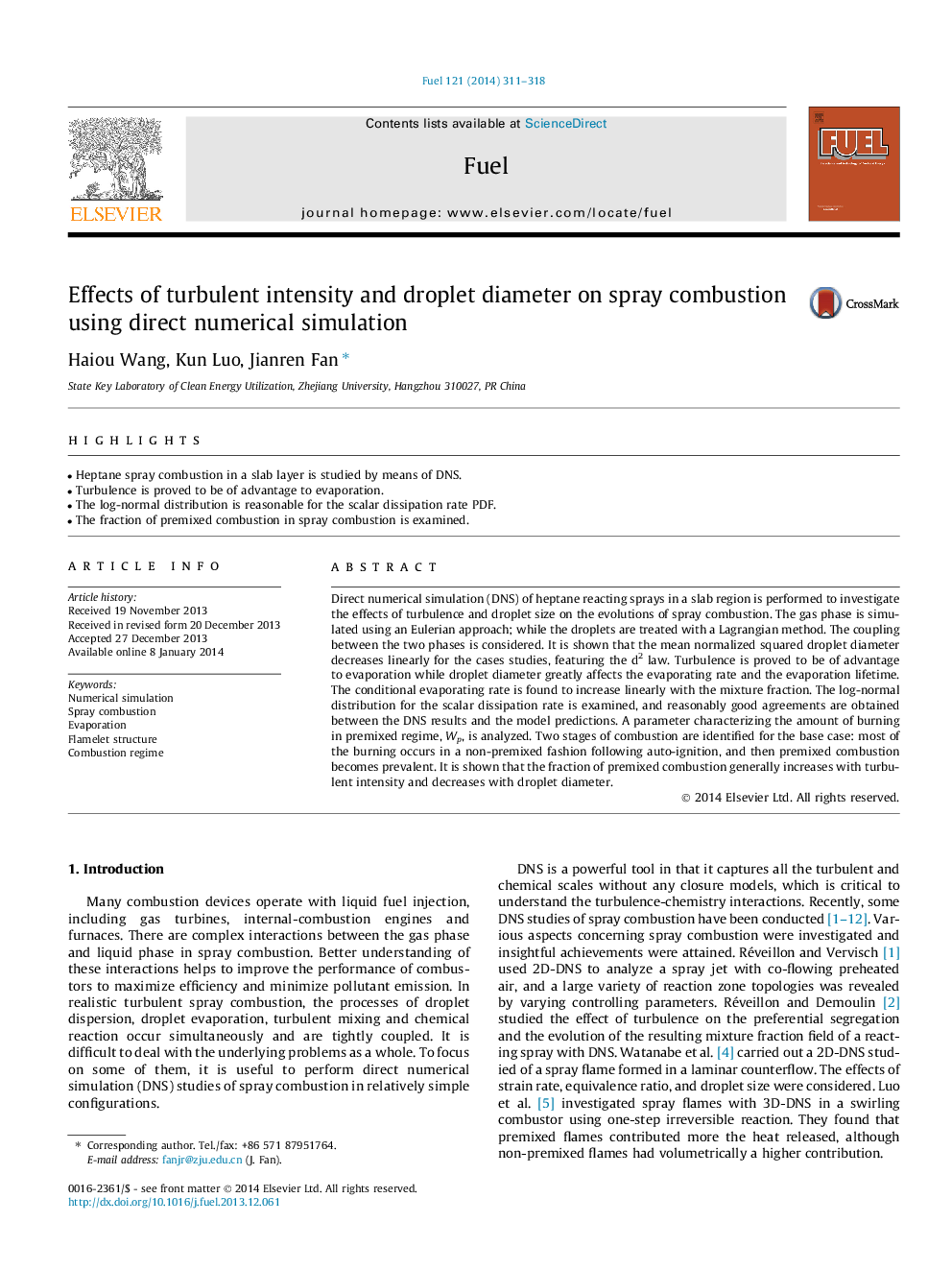| Article ID | Journal | Published Year | Pages | File Type |
|---|---|---|---|---|
| 206262 | Fuel | 2014 | 8 Pages |
•Heptane spray combustion in a slab layer is studied by means of DNS.•Turbulence is proved to be of advantage to evaporation.•The log-normal distribution is reasonable for the scalar dissipation rate PDF.•The fraction of premixed combustion in spray combustion is examined.
Direct numerical simulation (DNS) of heptane reacting sprays in a slab region is performed to investigate the effects of turbulence and droplet size on the evolutions of spray combustion. The gas phase is simulated using an Eulerian approach; while the droplets are treated with a Lagrangian method. The coupling between the two phases is considered. It is shown that the mean normalized squared droplet diameter decreases linearly for the cases studies, featuring the d2 law. Turbulence is proved to be of advantage to evaporation while droplet diameter greatly affects the evaporating rate and the evaporation lifetime. The conditional evaporating rate is found to increase linearly with the mixture fraction. The log-normal distribution for the scalar dissipation rate is examined, and reasonably good agreements are obtained between the DNS results and the model predictions. A parameter characterizing the amount of burning in premixed regime, Wp, is analyzed. Two stages of combustion are identified for the base case: most of the burning occurs in a non-premixed fashion following auto-ignition, and then premixed combustion becomes prevalent. It is shown that the fraction of premixed combustion generally increases with turbulent intensity and decreases with droplet diameter.
